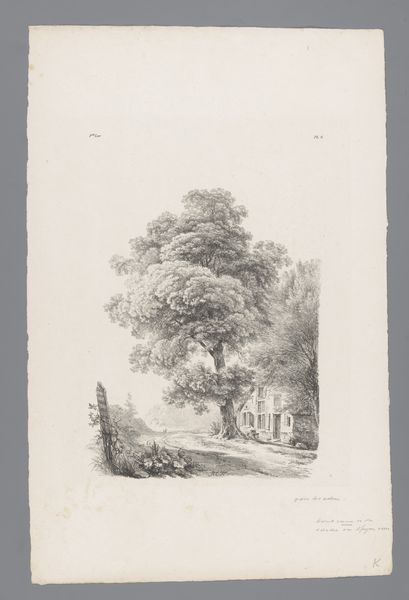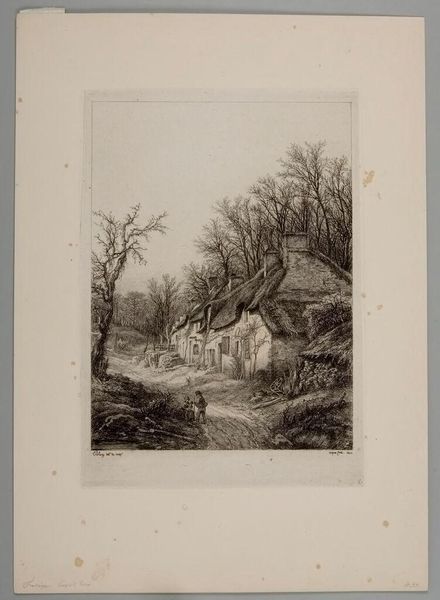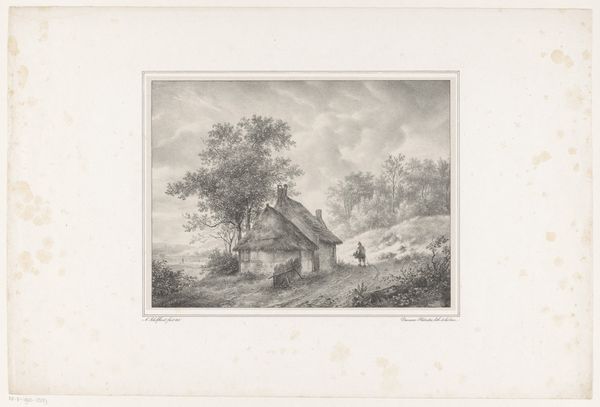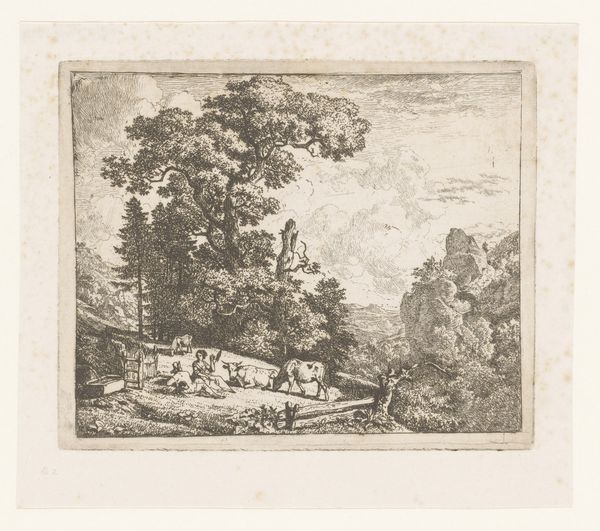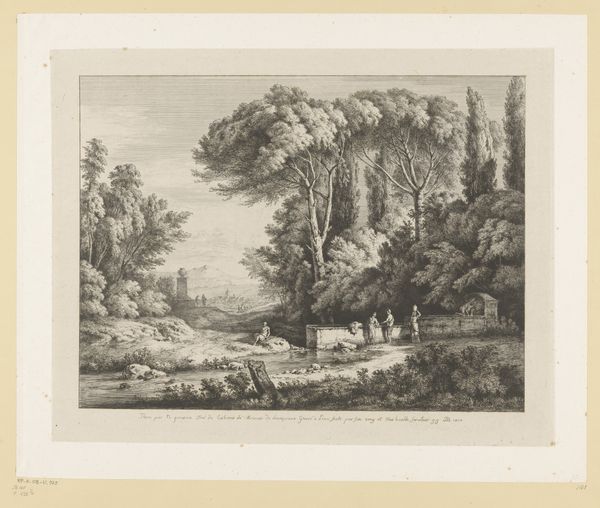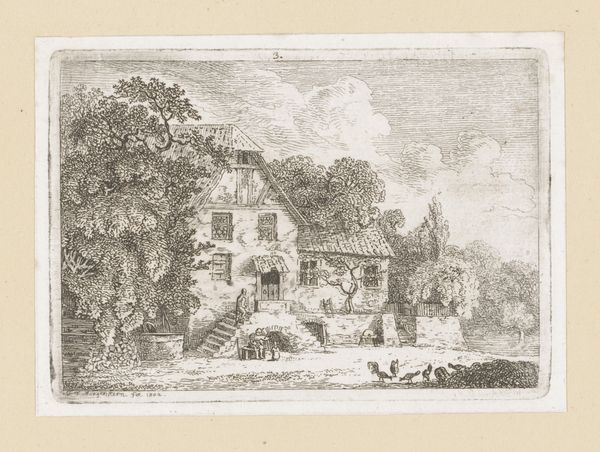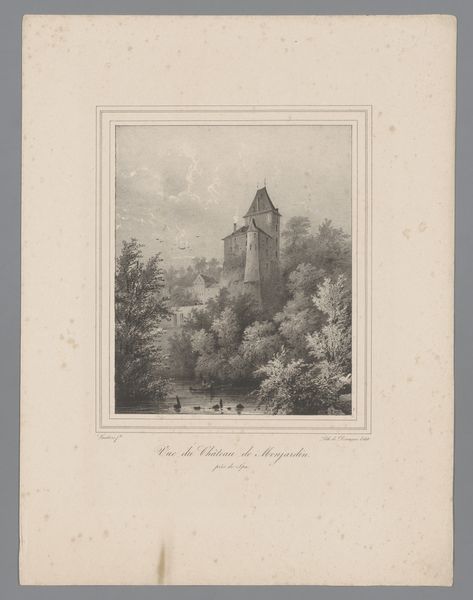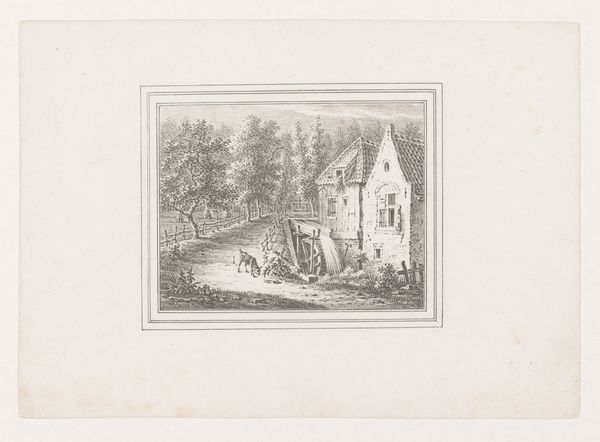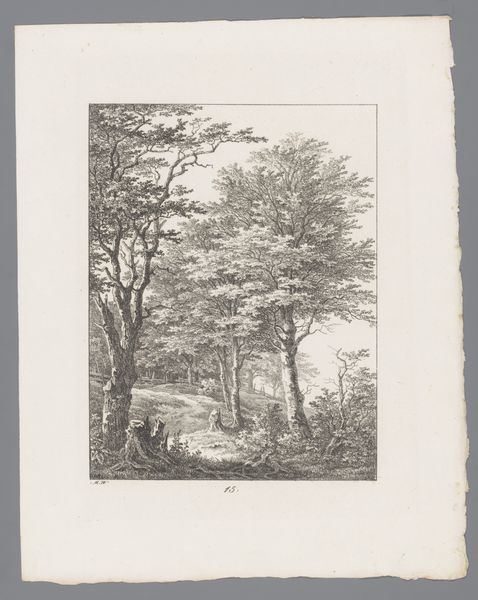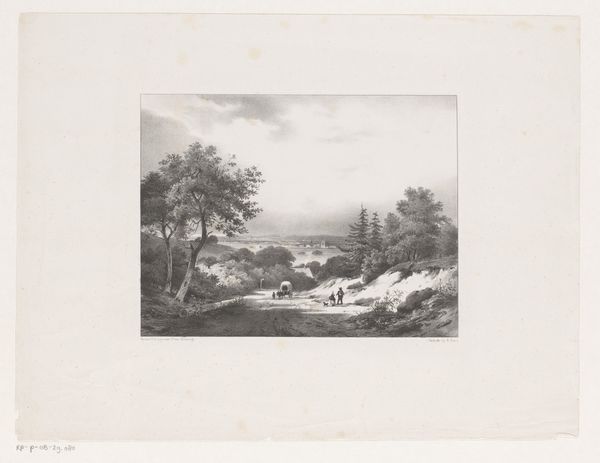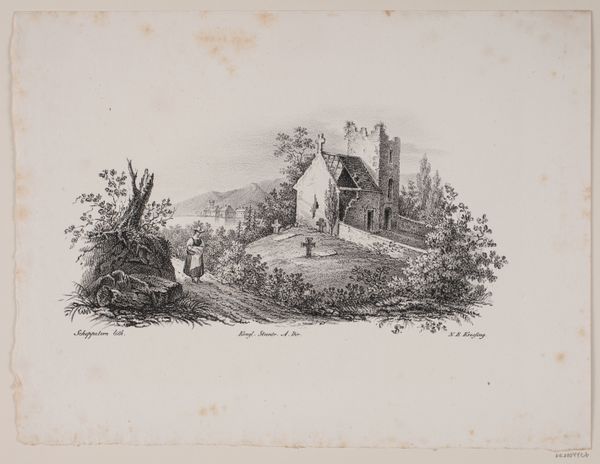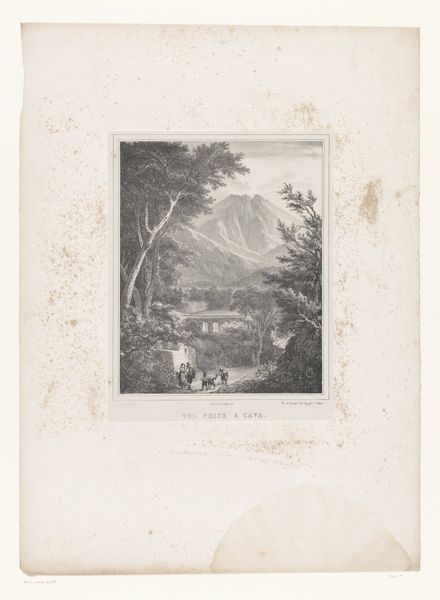
drawing, pencil
#
drawing
#
landscape
#
romanticism
#
mountain
#
pencil
#
realism
Dimensions: height 460 mm, width 320 mm
Copyright: Rijks Museum: Open Domain
Curator: Immediately, I'm struck by the stark contrast in tones – the brooding mountain backdrop against the idyllic foreground scene feels incredibly cinematic, almost like a stage set. Editor: That's a very evocative reading! Well, let's delve a little deeper. What you're seeing here is a pencil drawing entitled "A Hunter with Dogs near a House in the Mountains," crafted in 1822 by Johann Georg Schinz. It is firmly planted within the Romantic tradition. Curator: Ah, Romanticism. It's interesting that the hunter appears so small within this vast landscape. He isn't triumphant but just part of the world. Editor: Absolutely. Remember, Romanticism wasn't just about pretty landscapes; it grappled with the individual’s place within an overwhelming world. This hunter is not a conquering hero. It looks like he’s merely crossing through, which is much in keeping with that idea. Curator: And the castle ruin on the distant peak? It looks intentionally positioned to suggest history bearing down on the present, doesn't it? It's the past, quite literally, looming over them. Editor: Precisely. Ruins were a common motif, reminding viewers of vanished empires, the fleeting nature of earthly power. Notice the peasants casually relaxing next to their humble home; they look carefree compared to the haunting architectural forms behind. Curator: There is also something to say about that plume of smoke emerging from the house’s chimney, juxtaposed with what appear to be angry storm clouds dominating the peak behind. A cozy shelter is offered by civilization while untamed nature looms behind. Editor: That duality is very central to the aesthetic of the day. This pencil drawing allows for sharp details. Also, bear in mind the socio-political context of this work, dating from 1822: nationalism was on the rise. This picturesque scene contributed to an idealized view of nature, with common folk living humble lives in their landscape, so often presented in paintings by artists like Schinz. Curator: The landscape becomes a reflection of shared identity, a unifying symbol during times of dramatic changes. How cleverly the artist used it as propaganda. Thank you, the next time I look at this picture, it will carry new layers of meaning. Editor: I, too, appreciate seeing this in a fresh, culturally grounded framework. It helps see beyond the surface details, connecting the image to a world beyond the pencil strokes on this artwork.
Comments
No comments
Be the first to comment and join the conversation on the ultimate creative platform.

